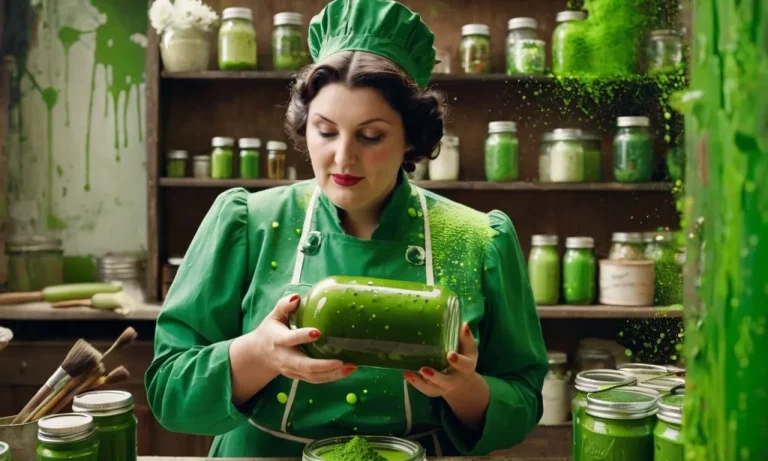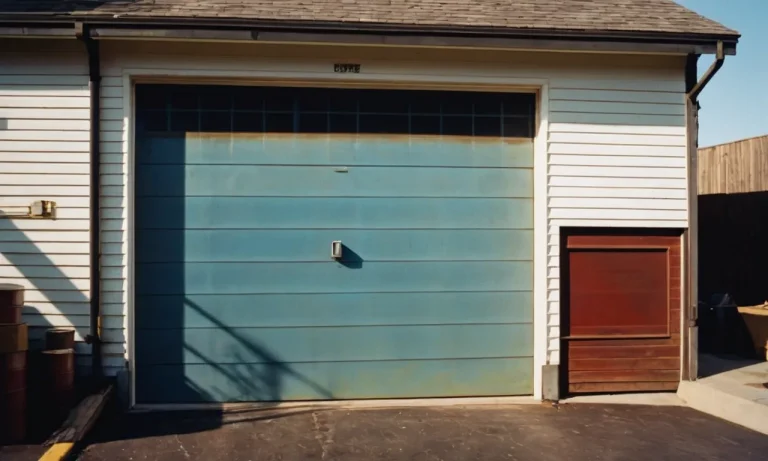Can You Wash Blackout Curtains? A Detailed Guide
Blackout curtains are great for blocking out light and creating an ideal sleep environment. But over time they can accumulate dust, pollen, and odors. So can you wash blackout curtains to refresh them? The quick answer is yes, you can wash most blackout curtains as long as you follow some care instructions.
In this comprehensive guide, we’ll cover everything you need to know about washing blackout curtains. We’ll discuss the different fabric types, cleaning methods, how to pre-treat stains, drying recommendations, and care instructions from manufacturers.
Check the Fabric and Care Label
When it comes to washing blackout curtains, the first step is to check the fabric and care label. Different types of fabrics require different cleaning methods to ensure their longevity and effectiveness.
By referring to the care label, you can determine whether the curtains can be machine washed, hand washed, or if they require dry cleaning.
Polyester, acrylic, microfiber
Many blackout curtains are made from synthetic materials such as polyester, acrylic, or microfiber. These materials are known for their durability and easy maintenance. Most polyester and acrylic blackout curtains can be machine washed on a gentle cycle using cold water.
It is recommended to use a mild detergent and avoid using bleach or harsh chemicals that may damage the fabric. After washing, it is best to hang the curtains to air dry or tumble dry on low heat. Be sure to follow the specific care instructions provided by the manufacturer to maintain the quality of the curtains.
Cotton, linen, silk
For blackout curtains made from natural fibers like cotton, linen, or silk, extra care must be taken during the cleaning process. These fabrics are more delicate and may require hand washing or dry cleaning. Hand washing is often the safest option for curtains made from natural fibers.
Fill a basin with lukewarm water and a mild detergent, and gently agitate the curtains for a few minutes. Rinse thoroughly and squeeze out excess water without wringing or twisting the fabric. Hang the curtains to air dry or lay them flat on a clean towel.
If the care label states that dry cleaning is recommended, it is best to take the curtains to a professional cleaner to ensure proper care.
Rayon, velvet, silk
Blackout curtains made from rayon, velvet, or silk require even more delicate care due to their luxurious and delicate nature. These fabrics should be handled with care to avoid damage. It is recommended to dry clean these curtains to maintain their quality and prevent any shrinkage or color fading.
Take them to a professional cleaner who specializes in handling delicate fabrics like rayon, velvet, or silk.
Pre-treat Stains and Heavy Soiling
Before washing your blackout curtains, it’s important to pre-treat any stains or heavy soiling. This step will help ensure that your curtains come out clean and fresh after washing. Here are a few tips to help you pre-treat stains effectively:
Identify the Stains
Take a closer look at your curtains and identify any visible stains. It could be anything from food stains to ink marks or even pet accidents. By identifying the type of stain, you can choose the appropriate stain remover or treatment method.
Test a Small Area
Before applying any stain remover or treatment to the entire curtain, it’s always a good idea to test it on a small, inconspicuous area first. This will help you determine if the treatment will cause any discoloration or damage to the fabric.
Choose the Right Stain Remover
Depending on the nature of the stain, you can use different stain removers such as liquid laundry detergent, vinegar, baking soda paste, or even specialized stain removers available in the market. Follow the instructions on the product label or refer to trusted sources like Good Housekeeping for specific guidance.
Apply the Stain Remover
Once you have chosen the appropriate stain remover, carefully apply it to the stained area. Gently blot the stain with a clean cloth or sponge, working from the outside towards the center to prevent spreading the stain further.
Let it Sit
Allow the stain remover to sit on the stain for a few minutes, or as recommended by the product instructions. This will give the stain remover enough time to penetrate the fabric and break down the stain.
Wash as Usual
After pre-treating the stains, you can proceed with washing your blackout curtains. Follow the care instructions provided by the manufacturer, which will typically involve using a gentle cycle with cold water.
Avoid using bleach or harsh detergents as they can damage the blackout coating on the curtains.
By pre-treating stains and heavy soiling before washing your blackout curtains, you can ensure that they come out looking clean and fresh. Remember to always follow the care instructions provided by the manufacturer to maintain the quality and longevity of your curtains.
Wash in Cold Water on Gentle Cycle
When it comes to washing blackout curtains, it is important to follow the care instructions provided by the manufacturer. In most cases, it is recommended to wash them in cold water on a gentle cycle. This helps to preserve the integrity of the fabric and prevent any shrinkage or damage.
Using cold water is beneficial for several reasons. First, it helps to prevent any color fading or bleeding, especially for darker-colored blackout curtains. Hot water can cause the fabric to lose its color or transfer it onto other items in the wash.
Cold water is also gentler on the fabric, reducing the risk of shrinkage or damage.
Using the gentle cycle on your washing machine is essential to protect the blackout curtains. This cycle typically has a slower spin speed and shorter washing time, which minimizes the risk of any damage to the fabric.
It is important to avoid using a regular or heavy-duty cycle, as this can put too much stress on the curtains and potentially cause them to tear or fray.
If your blackout curtains have any specific stains or spots, it is recommended to pre-treat them before washing. You can use a gentle stain remover or spot cleaner to target the affected areas. Be sure to follow the instructions on the product and test it on a small, inconspicuous area of the curtains first to ensure it does not cause any discoloration or damage.
After washing your blackout curtains, it is crucial to hang them to dry instead of using a dryer. High heat from the dryer can damage the fabric and potentially shrink the curtains. Instead, hang them up to air dry in a well-ventilated area.
Avoid direct sunlight, as this can also cause fading or discoloration.
It is worth noting that some blackout curtains may be labeled as dry clean only. In such cases, it is best to follow the manufacturer’s instructions and take them to a professional cleaner. Dry cleaning ensures that the curtains are properly cleaned without risking any damage to the fabric.
Air Dry or Tumble Dry on Low
When it comes to washing blackout curtains, one common question that arises is whether to air dry them or tumble dry on low. The answer depends on the type of blackout curtains you have and the care instructions provided by the manufacturer.
Air Drying
Air drying is a safe and gentle method for drying blackout curtains. It helps to preserve the fabric and prevent any potential shrinkage or damage. To air dry your blackout curtains, simply remove them from the washing machine and hang them up on a clothesline or drying rack.
Make sure to spread them out evenly to allow for proper air circulation.
Air drying blackout curtains can take some time, especially if they are thick or heavily lined. It is important to be patient and allow them to dry completely before rehanging or folding them. This will help prevent any mold or mildew from developing.
Tumble Drying on Low
Some blackout curtains may be labeled as safe for tumble drying on low. This method can be a convenient option if you need your curtains to dry quickly. However, it is essential to check the manufacturer’s instructions and care label before proceeding.
If your blackout curtains are suitable for tumble drying, place them in the dryer on a low heat setting. This will help prevent any potential damage to the fabric or lining. It is important not to use high heat, as this can cause the curtains to shrink or lose their effectiveness at blocking out light.
Keep in mind that not all blackout curtains are safe for tumble drying. Always check the care instructions provided by the manufacturer to ensure you are following the correct drying method.
Comparison: Air Drying vs. Tumble Drying
| Method | Advantages | Disadvantages |
|---|---|---|
| Air Drying |
|
|
| Tumble Drying on Low |
|
|
Ultimately, the decision to air dry or tumble dry your blackout curtains depends on the specific care instructions provided by the manufacturer. It is always best to follow these instructions to ensure the longevity and effectiveness of your curtains.
If you’re unsure about the proper care method for your blackout curtains, consider reaching out to the manufacturer or consulting a professional cleaner for guidance. They can provide expert advice based on the specific fabric and construction of your curtains.
Consider Professional Dry Cleaning for Silk
When it comes to washing blackout curtains made of silk, it is best to consider professional dry cleaning. Silk is a delicate fabric that requires special care to maintain its luxurious appearance and texture.
Professional dry cleaners have the expertise and equipment to clean silk curtains without causing any damage.
The Benefits of Professional Dry Cleaning for Silk Curtains
1. Expertise: Professional dry cleaners are trained in handling delicate fabrics like silk. They know the right cleaning techniques and products to use to ensure that your curtains are cleaned thoroughly without causing any harm.2. Preservation of Fabric: Silk curtains can easily lose their luster and become damaged if not cleaned properly. Professional dry cleaning helps preserve the fabric’s color, texture, and overall quality, ensuring that your curtains look as good as new for years to come.3. Stain Removal: Silk curtains are prone to staining, and regular washing at home may not effectively remove tough stains. Professional dry cleaners have specialized stain removal techniques that can effectively eliminate even the most stubborn stains from your curtains.
How Does Professional Dry Cleaning Work?
During the professional dry cleaning process, the curtains are not actually submerged in water. Instead, a specialized solvent is used to dissolve and remove dirt, stains, and odors. The solvent is then evaporated, leaving your curtains clean and fresh.
Note: It is important to choose a reputable dry cleaner that has experience in handling silk curtains. You can ask for recommendations from friends or family, or check online reviews to find a trusted dry cleaning service.
Conclusion
With the right washing method for the fabric, blackout curtains can be safely cleaned to extend their use. Always check the care label first and pre-treat any stains or heavy soiling. Wash curtains in cold water on a gentle cycle, then let air dry to prevent heat damage.
With proper care, blackout curtains will continue blocking light and creating restful sleep.







